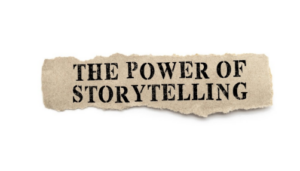
March 27, 2024
In the digital world,
your company narrative is a critical success factor

How well are you communicating your company’s business value story?
In today’s digital world of 24/7 internet access, all your key stakeholders (customers, employees, supply chain partners and others) are constantly impacted by how other people talk about your company’s products and services and how well they meet your customers’ expectations.
With the recent spread of ChatGPT and other generative AI tools, almost anyone can create and communicate a story about their experience with your company. In many cases, those experiences are not accurate reflections of your business value proposition and therefore distort the market’s view of who you are and what you do.
At the extreme, nefarious actors are using Generative AI to create damaging content and videos about your company. As Warren Buffet said at his recent investor retreat, “images and videos created using artificial intelligence have become so convincing that it’s virtually impossible to discern if they’re real or not. When you think of scamming people…I think it’s going to be the growth industry of all time.”
Why substituting KPIs for storytelling is not an effective solution
Many companies think the path to telling a compelling story about their company involves touting how they have performed against select KPI’s like revenue, margin, and profit growth. The problem with just using data to tell your story is that the person on the receiving end of that message has no understanding of or appreciation for how you have their best interests at heart. If your ultimate goal is to create sustainable relationships with your key stakeholders, you have to reach them on a personal level, not just a statistical level. This is where the power of good storytelling can make all the difference in how strongly they connect and engage with your company.
As Caroline Carruthers, CEO of a data consultancy in the UK said, “you can give people all the dashboards, charts, and figures in the world, but it’s when you help them understand the thinking behind what you do and bring it to life through real stories is when you get the buy-in you need.”
Frank Moyer, CTO of Kobiton, says storying helps to breakdown the communication barriers that make it hard for companies to successfully adopt and deploy new digital technologies. “When CTOs are authentically excited about their vision, this enthusiasm translates into compelling narratives that encourage active engagement and support of key technology initiatives.”
A clear and compelling narrative about your company directly influences how people perceive and understand what you do and why it adds value to the things that are most important to them. While it may seem foreign to many C-Suite leaders, creating and communicating a compelling business value story for your organization is now a critical leadership success factor. Every conversation you have with your customers, employees, and other key stakeholders presents an opportunity to clearly communicate who you are and why they can trust you to hold their best interests at heart.
From Fact Telling to Story Telling
Facts are good at documenting what a company does, but they aren’t effective in changing people’s attitudes and mindsets about the value the company brings to its customers, employees, and other key stakeholders.
What does it take to tell a really compelling story? Here are some suggestions from John Bates who has trained 100s of TEDx speakers:
“Every story needs the 5 C’s – Circumstance, Curiosity, Characters, Conversations, and Conflict.”
- To craft a compelling story, start by laying out the circumstances that will provide the context for the content you want to deliver
- Use curiosity to keep the listener engaged and wanting to hear more about your story
- Present real characters and real conversations to give your story reality and credibility
- Utilize real examples of conflict as the motivation for the stories that resolved them
By example, Accenture’s M&A advisory practice has recently acquired The Storytellers, a UK creative change management consultancy, to help their clients articulate and communicate their business value creation strategies for future mergers and acquisitions.
Some early adopters are replacing traditional PowerPoint presentations with interactive data storytelling which combines visualization, plus narrative, plus context. Visual interactivity enables people to better understand and communicate underlying data as a story rather than just facts and figures.
With the continued emergence of GenAI along with AR & VR, there will be many more tools and resources available to enhance and expand the impact and value of storytelling.
Who are you, who do your serve, and what do you stand for?

You can start this storytelling process by asking and answering some core questions:
- How do you tell the business value story in your company today?
- How well is that story being received?
- What storytelling tools and processes could improve your ability to tell the business value story?
- What do you ultimately want your company and its brand to stand for?
There are a number of resources and tools that are available to help you construct and deliver a compelling and engaging story about your company and its products and services. The key is to break free from the legacy, data-driven PowerPoint approach and embrace the storytelling approach.
|





